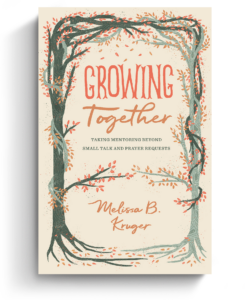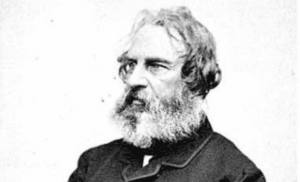My adult children all have three-lens cameras built into their phones. The multiple lenses enable them to zoom in on our grandbabies’ adorable faces, get a wide-angle view of an ocean sunset, and capture better images in low-light conditions. The combined work of these lenses enhances photo quality and results in sharper images.
Similarly, focusing on our Christian identity through three lenses—saint, sinner, and sufferer—gives us a clearer and more comprehensive picture of who we are.
You’re a Saint
Your first and primary identity as a Christian is firmly rooted in your union with Christ. Every other identity marker is secondary.
As Mike Emlet says,
Ongoing struggle with suffering or with sin must be understood in this basic context of our new identity as children of the living God. We are saints who suffer. We are saints who sin. But we are saints nonetheless at our core.
In Christ, you stand before God as a saint. Sanctification is the process by which you learn to practice this new position.
Your first and primary identity as a Christian is firmly rooted in your union with Christ.
For example, when Paul writes to the believers in Corinth, he addresses his letter “to those sanctified in Christ Jesus, called to be saints together with all those who in every place call upon the name of our Lord Jesus Christ” (1 Cor. 1:2). Despite the gap between the Corinthians’ holy position and their unholy practices, Paul assures them they’re “called to be saints.” That’s true of every Christian from the moment of conversion.
But like the Corinthian believers, we don’t always behave like saints. The challenge before us is to put into practice our position in Christ—to be who we already are in our standing before God.
It’s exciting to view yourself through the lens of your exalted position as a saint, but if you use this lens only, you may begin to think you’re stronger than you are—even invincible. When you remember you’re a struggler on the road to holiness, you won’t look down on those ensnared by sin, nor will you forget the warning to “keep watch on yourself, lest you too be tempted” (Gal. 6:1).
You’re a Sinner
As a saint, you’re set apart by God, for God, and to God. But learning to practice your new position in Christ is a lifelong process because you’re a redeemed sinner—a saint who still sins.
At conversion, we turn away from sin to Christ. This turn is the foundation of a lifestyle of continual repentance and belief. Biblical repentance is an ongoing decision to turn away from our slavery to sin and live as “slaves of righteousness” (Rom. 6:18).
Saving faith doesn’t trust Christ only for future salvation and then ignore him in the here and now. Instead, we must continue to cling to his person and work, not living “according to the flesh” (8:12) but according to “the will of God” (1 Pet. 4:2).
The sinner lens is useful for revealing our ongoing need for repentance. But if you look at yourself through this lens alone, you’ll likely feel defeated by your daily struggle against temptation. You may lose sight of the reality that, in Christ, you’ve been raised up with the One who already conquered sin, death, and the Devil. Jesus broke Satan’s back and unlocked sin’s shackles when he gave his life for you. In him, you’re a saint who walks in Spirit-powered newness of life (Rom. 6:4; Col. 3:1–10).
You’re a Sufferer
Suffering is one of the main tools God uses to work out believers’ sanctification. In our suffering, we learn to appreciate God’s loving presence and care throughout our lives.
Suffering is one of the main tools God uses to work out believers’ sanctification.
Suffering is ultimately a gift from God, whose love for us in Christ is profound and whose intent is to bless even when we experience pain. This was Paul’s conclusion in 2 Corinthians 12. Three times, he begged the Lord to take away his affliction. But instead of removing the thorn, Jesus replied, “My grace is sufficient for you, for my power is made perfect in weakness” (v. 9). In short, Jesus said, “No, Paul, I will not take it from you.”
God knew about Paul’s temptation to exalt himself. So the loving Lord wrapped up a thorn, labeled it with Paul’s name and address, and had Satan deliver it. This account shows us that no suffering enters our lives apart from God’s plan to sanctify and remake us in his Son’s image.
The lens of “sufferer” may seem hard to escape. Yet if you think of yourself only as a sufferer, you may fall prey to the crippling power of victimhood, seeing yourself as a passive pawn on life’s chessboard. As you peer through other lenses as well, you can view yourself as a sinner-saint who meets suffering with worship, actively responding to God’s sovereign goodness with confidence he’s working out his wise purposes for your good and his glory.
How the Threefold Lens Helps Us
In Christ, you’re a saint traveling down Sanctification Road. Along the way, you’ll be tempted to return to the pleasures of sin, and you’ll encounter the pain of suffering. Through these challenges, God is working out his good purpose.
What is his good purpose? God wants to sanctify us, to remake all believers in the image of his Son (Rom. 8:29; Col. 3:10). Second Corinthians 3:18 tells us that what we focus on—who or what we behold—is key to our spiritual growth. As we focus on the Lord Jesus, we better know ourselves, and we’re progressively transformed into his image “from one degree of glory to another.”
Gazing on Christ helps our spiritual lenses to line up with our threefold biblical identity. When we take a biblical “selfie,” we grow in assurance of our standing before God, are strengthened in the battle against indwelling sin, and become steadfast in suffering. When we immerse ourselves in the living and powerful Word of God, our evaluation of ourselves, our sin, and our circumstances aligns with God’s comprehensive perspective.
This article is adapted from Remade: Embracing Your Complete Identity in Christ by Paul Tautges (P&R, September 2023).
Involved in Women’s Ministry? Add This to Your Discipleship Tool Kit.
 We need one another. Yet we don’t always know how to develop deep relationships to help us grow in the Christian life. Younger believers benefit from the guidance and wisdom of more mature saints as their faith deepens. But too often, potential mentors lack clarity and training on how to engage in discipling those they can influence.
We need one another. Yet we don’t always know how to develop deep relationships to help us grow in the Christian life. Younger believers benefit from the guidance and wisdom of more mature saints as their faith deepens. But too often, potential mentors lack clarity and training on how to engage in discipling those they can influence.
Whether you’re longing to find a spiritual mentor or hoping to serve as a guide for someone else, we have a FREE resource to encourage and equip you. In Growing Together: Taking Mentoring Beyond Small Talk and Prayer Requests, Melissa Kruger, TGC’s vice president of discipleship programming, offers encouraging lessons to guide conversations that promote spiritual growth in both the mentee and mentor.




























